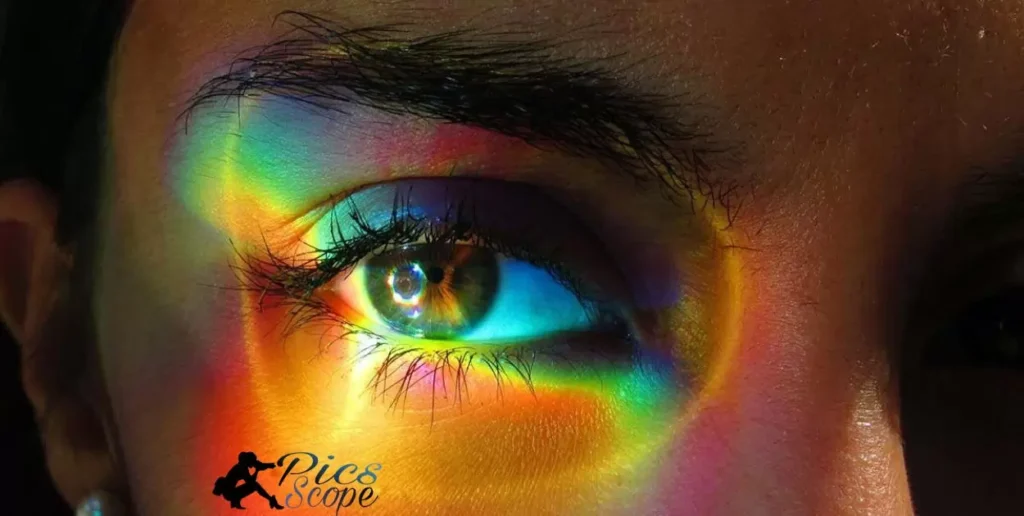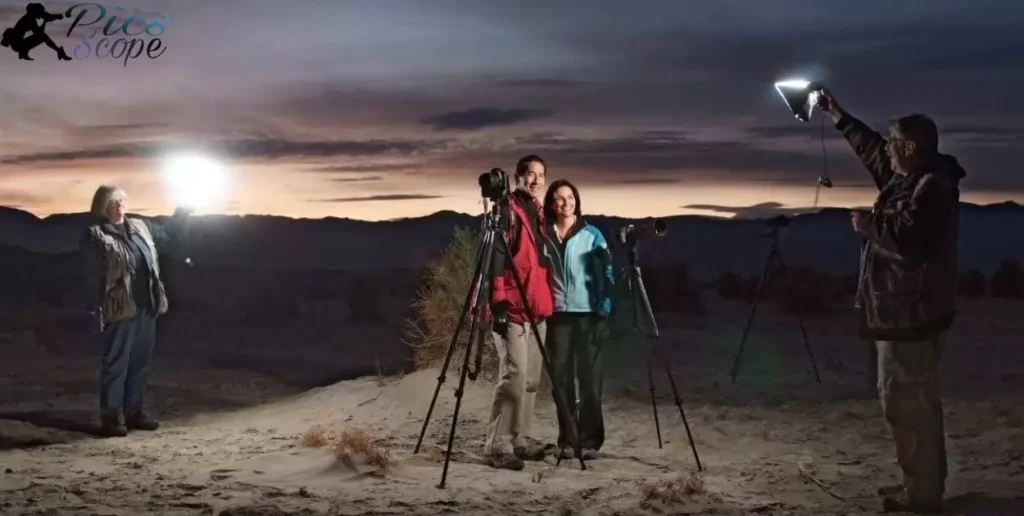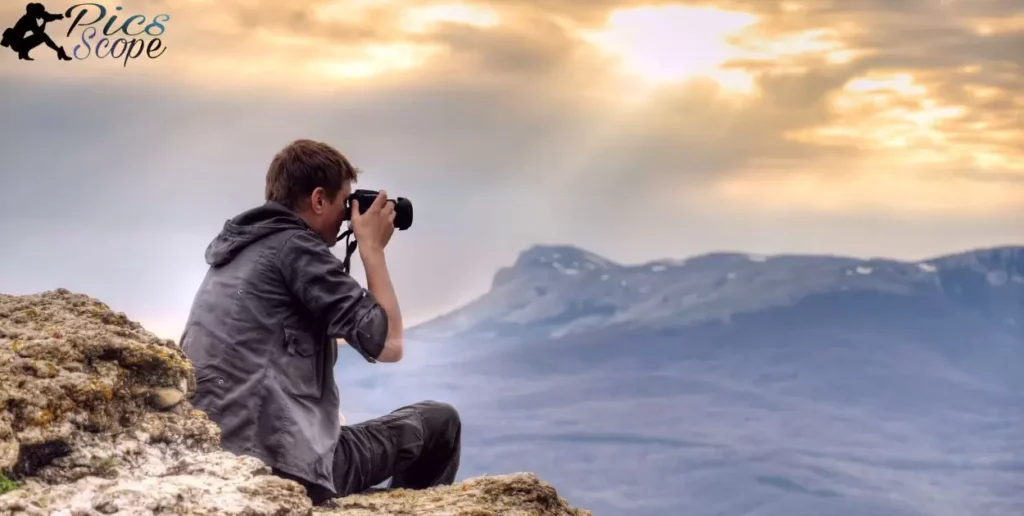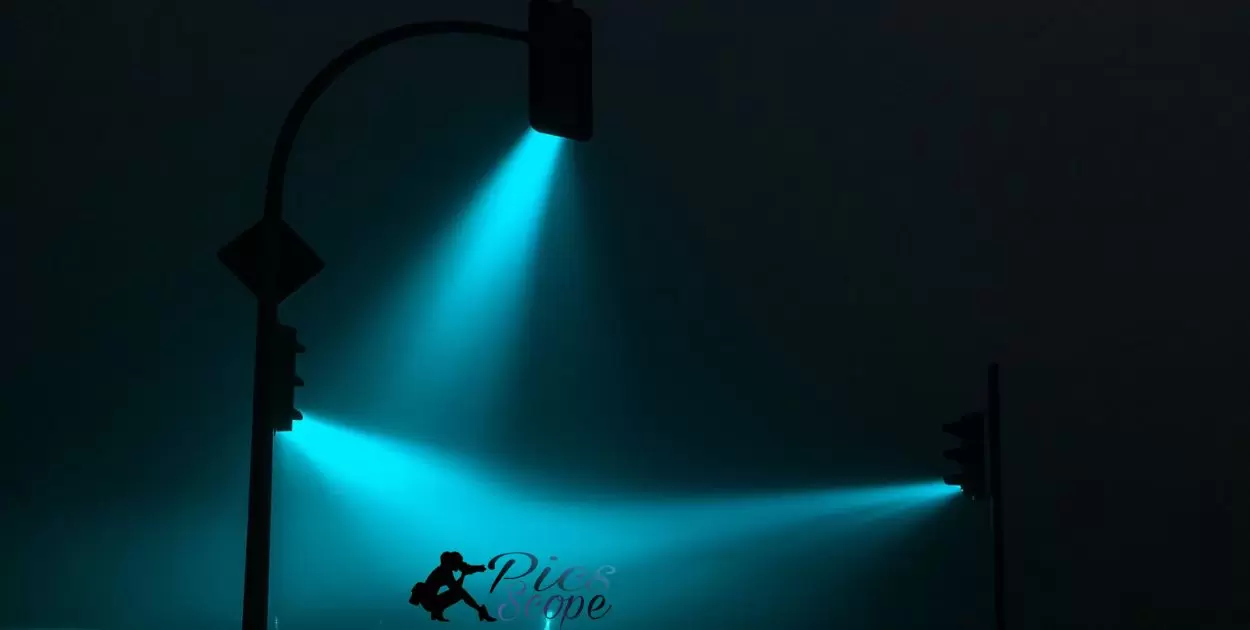Visible light refers to the wavelengths of electromagnetic radiation that are visible to the human eye. In photography, visible light is used to capture images using a camera. The light enters the camera through the lens and hits the image sensor which records the light to create the photograph.
How Is Visible Light Used In Photography – this essential question covers the very foundation of the photographic process. Without visible light interacting with and being recorded by the camera, no image could be created. Understanding how light is utilized allows greater creative and technical control in photography.
There are several useful tips for working with visible light in photography. Using natural light from the sun or artificial continuous lighting provides clear, sharp images. Adjusting aperture, shutter speed and ISO settings based on the available light conditions helps produce properly exposed, high-quality photographs.
What is visible light photography?
Visible light photography refers to capturing images using visible light, which is the light that normal human eyes can detect. This includes natural light from the sun or other light sources that emit radiation in the visible spectrum, like lightbulbs.
Visible light photography encompasses most common forms of photography, where a camera sensor detects the visible light that is either emitted or reflected from the subject in order to form the image.
Specialized techniques in visible light photography involve manipulating light over longer exposures to create specific effects. Painting with light, also called light painting, is done by moving a handheld light source during a long exposure to “draw” shapes that are then captured in the final image.
How does visible light interact with camera sensors?
Visible light interacts with camera sensors through the photoelectric effect. When photons of visible light hit the sensor, they transfer energy to the atoms in the semiconductor material causing them to release electrons. The sensor circuitry detects these released electrons and forms an electrical representation of the light.
More light hitting a part of the sensor generates more electrons, creating a stronger signal that is read as brighter in the final image. The color filters on the camera sensor also filter the light to separate out red, green and blue light which are then detected by separate photosites on the sensor. The relative strengths of the red, green and blue signals determine the final color value for each pixel.
So the basic principle is that visible light causes a variable electrical response in the sensor which is interpreted as color and brightness. The sensor effectively converts photons into an electrical pattern that mimics the variation in visible light falling on its surface.
What camera settings control visible light?
The three main camera settings that control visible light are aperture, shutter speed and ISO. Aperture controls the area over which light can enter, shutter speed controls the duration, and ISO controls the sensor sensitivity.
A larger aperture opening allows more light to hit the sensor by increasing the diameter of the lens opening. Slow shutter speeds allow light to fall on the sensor for more time before the exposure ends. Higher ISO numbers boost the sensor’s sensitivity to light, generating more signal even with less light.
These settings form the exposure triangle that governs image brightness. Adjusting these settings creates visible effects – large apertures decrease depth of field, slow shutter speeds induce motion blur, high ISOs introduce noise. Photographers manipulate these options to achieve desired creative outcomes.
How to manipulate direction and intensity of visible light in photography
The direction and intensity of visible light can be controlled in photography through modifiers and reflectors. Diffusers, softboxes and umbrellas enlarge and soften light sources to make lighting more uniform and flattering. Reflectors like mirrors or white boards can be used to bounce existing light onto shadow areas of a scene to fill them in.
The position and angle of the light in relation to the subject also changes the directionality and falloff rate of the illumination and alters shadows and highlights. Side lighting emphasizes contours and shapes while top down lighting flattens details. Backlighting creates outlines or silhouettes.
Graduated neutral density filters allow modulation of light intensity across an exposure, making one area brighter and another darker within the same shot. Polarizing filters cut down on reflections and glare to saturate colors. The time of day and weather affects the angle and diffuseness of sunlight as an uncontrolled light source.
What are the properties of visible light used in photography?

The key properties of visible light that impact photography are wavelength and frequency. Wavelength determines the color of light, with violet light having the shortest wavelengths (around 400 nm) and red light having the longest wavelengths (around 700 nm).
Frequency is related to wavelength, with higher frequencies corresponding to shorter wavelengths. In photography, wavelength and frequency affect how light interacts with the camera sensor and determines what is captured in the image.
The amplitude (brightness) of visible light waves also impacts photography through exposure. Higher amplitude light waves will lead to overexposure, blowing out image details. Lower amplitude waves lead to underexposure. Photographers must properly expose the camera sensor to the right amplitude light waves to capture an image with good contrast and detail.
How does wavelength impact photography?
Wavelength significantly impacts photography because it determines the color and energy of light waves. Shorter wavelength visible light waves, like violet and blue, have higher frequencies and thus carry more energy per photon. This extra energy can sometimes cause overexposure in images.
Longer red wavelengths have lower frequencies and less photon energy. They may require longer exposures to properly capture.Additionally, wavelength determines light’s interaction with camera lenses and filters.
Lenses and filters are specially designed to manipulate specific wavelengths of visible light in various ways, such as reducing reflections or enhancing color contrasts. Photographers leverage wavelengths’ interaction with camera optics to creatively shape final images. Composition Techniques for Stunning Photographs is key for photographers looking to take their skills to the next level.
How does the frequency of visible light waves impact images?
The frequency of visible light waves impacts images through the photon energy at that frequency. Higher frequency visible light waves have more energetic photons, which can sometimes overexpose image details because too many photons hit the camera sensor.
Lower frequency light has less energetic photons. While less likely to blow out highlights, images may turn out underexposed or grainy if frequency and exposure time aren’t adjusted.
Additionally, frequency affects how visible light penetrates objects in the scene. Higher frequencies penetrate less, causing more surface-level reflections.
Lower frequencies penetrate deeper, enabling photographers to reveal subsurface details. Photographers leverage frequencies’ interaction with objects to creatively shape final images.
What is the relationship between amplitude and exposure
Amplitude is directly related to exposure in photography. Amplitude refers to the height or brightness of light waves. In photography, higher amplitude visible light waves contain more photons. This greater photon count leads to more exposure on the camera sensor, blowing out image highlights.
To properly expose images, photographers adjust aperture, shutter speed, and ISO to match the visible light waves’ amplitude. Lower amplitude light requires wider apertures, slower shutter speeds, and higher ISO to sufficiently expose the sensor. Higher amplitude light requires the opposite settings to prevent overexposure.
How do photographers control visible light?

Photographers can control visible light in several ways. First, they can choose when to shoot based on the quality of ambient light, for example at sunrise, sunset, or on an overcast day. They also control light by modifying its direction, intensity, color, and hardness using photographic lighting equipment like reflectors, flags, diffusers, and colored gels.
Positioning artificial lights at different angles or distances alters light quality. Photographers also control what’s illuminated in-camera with barn doors, snoots, grids, and gobos to shape the beam of light.
In post-production, photographers make additional adjustments to light. Dodging and burning brings out highlights and shadows. Contrast, vibrance, and color balance sliders also change the rendition of light in a photo. The most skilled photographers learn to master light both on set during the shoot and in post-production afterwards.
What camera modes offer manual control over photography light?
The two main camera modes that provide the most manual control over photographic light are manual mode and aperture priority mode. In full manual mode, photographers directly set the shutter speed and aperture, giving full control over exposure length and depth of field.
This allows crafting long exposures for light painting effects or using wide apertures to isolate subjects with narrow depth of field. Manual mode requires judging proper exposure yourself.
Aperture priority mode allows manually selecting the aperture while the camera sets shutter speed automatically based on the camera’s light meter.
This maintains full control over depth of field while freeing the photographer from judging exposure. Photographers might choose wide apertures for bokeh or narrower apertures for large depth of field.
What types of lenses bend visible light?
The two main types of camera lenses that bend visible light are wide-angle lenses and telephoto lenses.
Wide-angle lenses have short focal lengths, bending light to take in a wider field of view. This allows fitting more of a scene into the frame. Wide-angle lenses exhibit some barrel distortion, curving straight lines outward. Ultra wide angle lenses increase this distortion effect.
Telephoto lenses have long focal lengths, bending light to magnify distant subjects. They narrow the angle of view for isolating details. Telephoto lenses can exhibit pincushion distortion, curving straight lines inward. Zoom lenses combine variable wide-angle to telephoto focal lengths in one lens.
Specialty tilt-shift lenses allow manipulating the plane of focus by literally angling the lens to bend light. Macro lenses provide extreme magnification for close-up photography. Fish-eye lenses bend light to take in a 180 degree hemispheric field of view.
How to diffuse harsh visible light in photography
Harsh unflattering light with strong shadows and contrast can be diffused in several ways. One option is to move shooting earlier or later in the day when sunlight is less intense. Cloud cover also naturally diffuses sunlight. Indoors, window light can be diffused with sheer curtains.
Reflectors, silks, and scrims placed strategically around light sources soften shadows and highlights. Diffusion discs, softboxes, and umbrellas in front of flashes or continuous lighting distribute the light. The larger the light source relative to the subject, the softer and more diffused the illumination.
Post-production retouching like dodging and burning evens out contrast between bright and dark regions. The clarity and dehaze sliders bring out detail in harsh highlights and shadows. Graduated neutral density filters applied in software also balance exposure across the frame. Careful diffusing preserves a flattering, low contrast rendition of the subject.
How is color photography related to visible light?
Color photography relies on capturing and reproducing the visible spectrum of light. The visible light spectrum that humans can see ranges from violet to red. In color film and digital photography, there are three layers or channels that each record one of the three primary colors – red, green and blue light.
By layering these three primary colors, all other colors can be reproduced. So color photography fundamentally depends on the properties of visible light and how it interacts with the camera sensor or film to be decomposed into three color channels that can then be recombined to reproduce a full-color image.
The specific wavelengths of visible light determine the colors we see – short wavelengths of 400-500 nm appear blue/violet while longer wavelengths around 600-700nm appear orange/red. Color film and digital camera sensors have color filters that only allow certain wavelength ranges to pass through to each layer. This filtering and decomposition of visible white light enables the capture and rendering of color images.
How do different wavelengths produce color photography?
Different wavelengths of visible light correspond to different colors that we can see. Shorter wavelength blue/violet light has more energy than the longer wavelength red/orange light. In color photography, filters allow light to be captured selectively in the red, blue and green regions of the spectrum on three separate film layers or digital sensor channels.
For example, blue channel filters only transmit blue wavelengths to be recorded, green channel filters only allow green wavelengths through and red channel filters only capture red wavelengths of light. The range and specificity of the wavelengths filtered defines the colors that can be reproduced. Broad wavelength ranges capture more intensities but produce less saturated color.
By decomposing the spectrum of natural visible light into these three primary color channels, and then recombining them in processing or printing, full color images can be reproduced that are similar to what we naturally see with our eyes. So the interaction of light wavelength with the camera filters enables color capture through optical and chemical means.
What is color temperature in photography?
Color temperature refers to the relative warmth or coolness of white light, which photographers can adjust through white balancing. It is measured in degrees Kelvin (K). Lower Kelvin temperatures like 3000K are warmer and appear more yellow/orange; higher temperatures over 5000K are cooler and bluer.
Different natural light conditions and artificial lights emit different color temperatures. For example, household tungsten bulbs emit a warm ~3000K temperature, while daylight is a cooler 5000K. Camera white balance controls allow color constancy – making whites look neutral white across different lighting.
Proper white balancing removes unrealistic tinting so white objects appear white. However, creatively altering the white balance can produce colorful effects to match the scene lighting or mood the photographer wants to convey.
How to white balance cameras to visible light?
Cameras can automatically white balance using presets optimized for common light types like sunlight, shade or tungsten lighting. Automatic white balance works best in clearly defined conditions.
For more precise control, photographers can custom white balance by having the camera measure the white balance of the ambient light. This is done by framing a neutral white or grey reference object under the target light source. The camera uses this reference point to set the appropriate color temperature and tint to render whites properly neutral.
Manual white balance modes also allow directly adjusting color temperature in Kelvin to visually match the qualities of the ambient light. Fine-tuning amber/blue and magenta/green tint axes can also compensate for color casts from mixed lighting. Learning to white balance takes practice but gives photographers creative control over color rendition.
What are some advanced uses of visible light in photography?

Visible light photography continues to evolve with new technologies and techniques. Some advanced uses include:
- High dynamic range (HDR) photography: Capturing multiple exposures at different brightness levels allows more detail to be captured in highlights and shadows. Software then combines the images into one high dynamic range image. This overcomes issues with the limited dynamic range of camera sensors.
- Infrared photography: Special filters block visible light but allow infrared wavelengths to pass through. This can create unique black and white or false color images, revealing details not visible to the naked eye.
- Ultraviolet photography: UV light reveals fluorescence not visible to human vision. It is used to enhance contrasts and details in forensic documentation.
How is ultraviolet light used in forensic photography?
Ultraviolet photography has several forensic applications:
- Enhancing bruises, scars, wounds, blood stains and other injuries on human skin by inducing fluorescence.
- Detecting trace evidence like fibers, hairs, and body fluids which fluoresce under UV illumination. This helps locate and document forensic evidence.
- Revealing alterations made with materials that fluoresce differently from the background document, helping detect forgeries.
UV photography must be done correctly to get admissible results. Proper calibration, controls, filters and documentation ensures scientific standards are met.
How to photograph visible light spectrums?
To photograph visible light spectrums:
- Shine white light through a prism to split it into its color components.
- Position the camera to capture the full spectrum directly.
- Use a slit in front of the prism to better separate and focus the spectral lines.
- Adjust shutter speed and aperture appropriately for the light level.
- Process RAW images to optimize color, contrast and white balance.
- Composite multiple exposures to capture the full dynamic range if needed.
Proper setup and post-processing brings out the vivid colors in the spectrum.
What is light painting photography?
Light painting refers to long exposure photography where light sources are manually moved in front of a static camera to selectively illuminate or “paint” parts of the scene during the exposure.
Common light sources used include flashlights, glow sticks, cell phones, and specialized LED light panels. Light painting requires careful planning and timing to properly execute. It is an artistic technique that lets photographers create one-of-a-kind images full of color, patterns and dimension.
FAQ’s
Why is visible light important for photography?
Visible light allows cameras to capture colors, details and textures in a way that matches human perception.
How does visible light enable accurate color rendering?
The wavelengths of visible light align with the light sensitive pigments in camera sensors, allowing accurate color reproduction in images.
What role does visible light play in editing photos?
Visible light provides a solid foundation for editing color, contrast and other parameters to enhance images.
How has technology changed visible light photography?
Advances allow manipulating visible light to create high dynamic range and infrared photos revealing more than the naked eye can see.
Will visible light remain essential to photography?
Yes, as visible light most closely matches human vision, it will likely remain photographers’ primary choice for capturing scenes.
Conclusion
How Is Visible Light Used In Photography is essential for photography. Cameras use visible light to capture colors, details, and textures in a scene. The wavelengths of visible light align with the light sensitive pigments in camera sensors, allowing accurate color reproduction. As technology advances, photographers can manipulate visible light to create images revealing more than the naked eye can see, such as high dynamic range and infrared photos.
Visible light enables photographers to create images that closely match human vision. The properties of visible light, combined with technological innovations, give photographers creative control over color, contrast, shadows, and other parameters.
As visible light aligns most closely with human perception, it will likely remain the predominant choice in photography for capturing scenes in vivid and accurate detail. Photographers harness both the science and art of visible light to produce stunning images.







